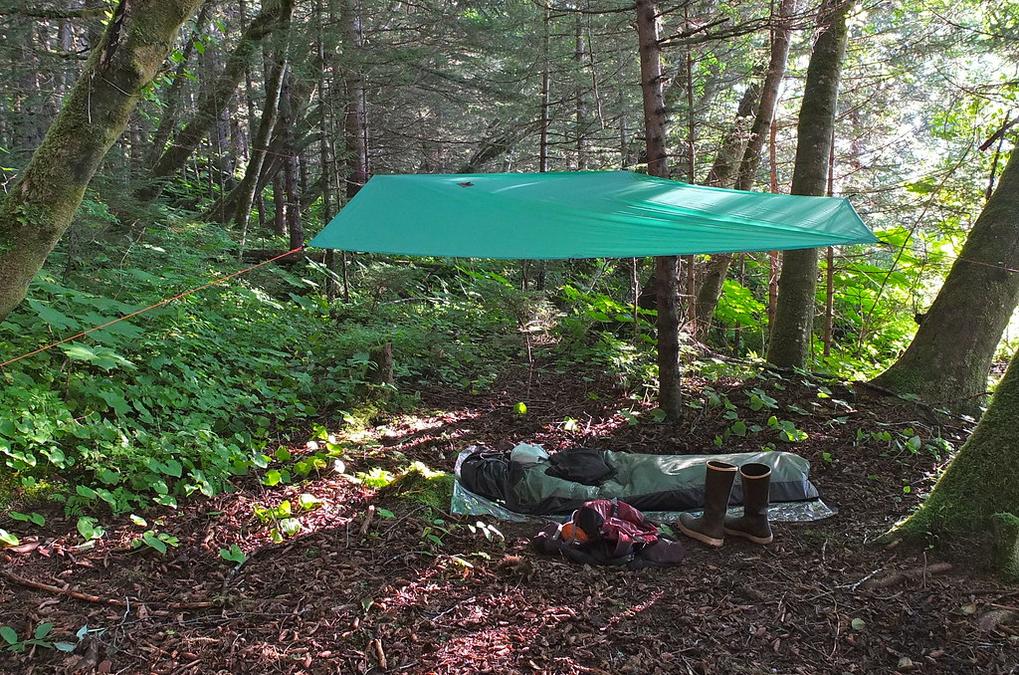Benefits of Hammock Camping
Hammock camping has become increasingly popular in recent years, and it’s easy to see why. Not only is it more comfortable than tent camping, but it also offers a unique outdoor experience. In this article, we will discuss how to set up a hammock for the ultimate camping experience.
Benefits of Hammock Camping
Here are some benefits of hammock camping:
- Comfort: A hammock offers a comfortable sleeping experience, and you won’t have to deal with rocks or uneven ground.
- Versatility: A hammock can be set up almost anywhere, and it’s perfect for camping, hiking, or just lounging in your backyard.
- Portability: Hammocks are lightweight and easy to pack, making them perfect for backpacking trips.
- Better Sleep: Sleeping in a hammock can help you fall asleep faster and sleep more deeply, thanks to the gentle rocking motion.
- Eco-Friendly: Hammocks are an eco-friendly alternative to tents, and they don’t leave a trace on the environment.
Importance of Proper Setup
While hammock camping offers many benefits, it’s important to set up your hammock properly to ensure a comfortable and safe experience. In the next section, we will discuss the essential gear you’ll need to set up your hammock.

Essential Gear for Hammock Camping
Before you start setting up your hammock, you’ll need to make sure you have the essential gear. Here’s what you’ll need:
Hammock Types
There are two types of hammocks: gathered-end and bridge. According to REI, gathered-end hammocks are the most popular type and are made up of a piece of fabric with gathered ends that are attached to suspension ropes or straps. They are lightweight and easy to set up, making them perfect for camping.
On the other hand, WikiHow explains that bridge hammocks are more stable than gathered-end hammocks and have a flatter sleeping surface. However, they are bulkier and heavier, making them less suitable for backpacking trips.
Hammock Suspension Systems
You’ll also need a suspension system to hang your hammock. Here are the most popular options:
- Tree Straps: According to Instructables, tree straps are the easiest and most environmentally friendly option. They wrap around the tree and are fastened with a buckle or carabiner.
- Rope: Rope is a traditional option but can damage trees if not used properly. It’s important to use a wide, flat rope and distribute the weight of the hammock evenly to prevent damage. As per REI, it’s important to use a rope that’s at least 0.75 inches thick to prevent damage to trees.
- Webbing: REI suggests that webbing is similar to tree straps but wider and stronger. They’re a good option for heavier hammocks or if you’re camping in an area with strong winds.
Carabiners and Other Hardware
To attach your hammock to the suspension system, you’ll need carabiners or other hardware, such as S-hooks or toggles. According to Hennessy Hammock, carabiners are the most popular option because they’re easy to use and secure. It’s important to choose a carabiner that’s rated for the weight of your hammock and suspension system.
With the right gear, you’ll be ready to set up your hammock and enjoy a comfortable night’s sleep in the great outdoors. In the next section, we’ll discuss choosing the perfect location for your hammock.

Choosing a Location for Your Hammock
Choosing the right location is crucial to ensuring a comfortable and safe hammock setup. Here are some factors to consider:
Tree Selection
When selecting trees for your hammock, it’s important to choose healthy trees that are at least 6 inches in diameter. According to REI, hardwood trees like oak and maple are better suited for hammock camping than softwood trees like pine and spruce.
Proper Distance Between Trees
The distance between the trees is also important. According to Hennessy Hammock, the ideal distance between trees for a hammock setup is 10 to 12 feet. However, this can vary depending on the length of your hammock and the distance of your suspension system.
Avoiding Damage to Trees
It’s important to hang your hammock without causing damage to the trees. According to Instructables, you should wrap your tree straps or ropes around the tree and use a toggle or carabiner to attach them to your hammock. Avoid using nails, screws, or other hardware that can damage the tree bark.
By selecting healthy trees, ensuring the proper distance between them, and avoiding damage to the trees, you can set up your hammock safely and responsibly. In the next section, we’ll discuss how to set up your hammock.
Setting Up Your Hammock
Once you’ve chosen the perfect location for your hammock, it’s time to set it up. Here’s how to do it:
Step 1: Attach Suspension System
Attach your suspension system to the tree according to the manufacturer’s instructions. According to WikiHow, it’s important to hang your suspension system at a 30-degree angle to achieve the best balance and comfort.
Step 2: Attach Hammock to Suspension System
Attach your hammock to the suspension system using carabiners or other hardware. According to Hennessy Hammock, it’s important to attach your hammock to the suspension system at chair height. This will ensure that the hammock doesn’t sag too low and cause discomfort.
Step 3: Adjust Height and Angle
Adjust the height and angle of your hammock according to your preference. According to WikiHow, the ideal height for your hammock is around 18 inches off the ground. This will ensure that you can easily get in and out of the hammock.
Step 4: Test Your Setup
Test your setup by sitting in the hammock and adjusting the height and angle as needed. According to REI, it’s important to make sure that your weight is evenly distributed between the suspension system and the hammock to prevent damage or failure.
Step 5: Enjoy!
Once you’ve successfully set up your hammock, it’s time to relax and enjoy the great outdoors.
By following these steps, you can set up your hammock safely and comfortably. In the next section, we’ll discuss some tips for caring for your hammock.
Caring for Your Hammock
Proper care and maintenance can help extend the life of your hammock. Here are some tips for caring for your hammock:
Cleaning Your Hammock
According to Instructables, it’s important to clean your hammock regularly to prevent mold and mildew buildup. To clean your hammock, simply hand wash it with a mild detergent and let it air dry.
Storing Your Hammock
When not in use, it’s important to store your hammock properly to prevent damage. According to Hennessy Hammock, you should store your hammock in a cool, dry place out of direct sunlight. If possible, store your hammock in a stuff sack or bag to protect it from dust and debris.
Protecting Your Hammock
To protect your hammock from damage, it’s important to avoid sharp objects and rough surfaces. According to REI, you should also avoid sitting on the edge of your hammock or jumping in and out of it, as this can cause unnecessary stress on the suspension system.
By cleaning, storing, and protecting your hammock, you can ensure that it lasts for many camping trips to come. In the next section, we’ll discuss some common mistakes to avoid when setting up your hammock.
Common Mistakes to Avoid
While setting up a hammock can be a straightforward process, there are some common mistakes to avoid. Here are a few of them:
Hanging Your Hammock Too Tightly
According to WikiHow, hanging your hammock too tightly can cause discomfort and stress on the hammock and suspension system. Make sure to give your hammock some slack to achieve a comfortable and balanced setup.
Setting Up Your Hammock in Unsafe Locations
It’s important to set up your hammock in a safe and responsible location. According to Instructables, you should avoid setting up your hammock near sharp rocks, cliffs, or other hazardous areas.
Not Using Tree Straps
Using the wrong hardware or tying knots around the tree can cause damage to the tree bark. According to Hennessy Hammock, it’s important to use tree straps or ropes to attach your hammock to the tree.
Ignoring the Weight Capacity
Overloading your hammock beyond its weight capacity can cause damage or failure of the suspension system or the hammock itself. According to REI, it’s important to check the weight capacity of your hammock and suspension system before setting up.
Not Checking for Proper Height and Angle
Not checking the height and angle of your hammock can cause discomfort or even injury. According to WikiHow, it’s important to adjust the height and angle of your hammock to achieve a comfortable and balanced setup.
By avoiding these common mistakes, you can ensure a safe and comfortable hammock setup. In the next section, we’ll summarize the key takeaways from this article.

Wrap Up
Setting up a hammock can be a fun and relaxing way to enjoy the great outdoors. By following these tips, you can set up your hammock safely and comfortably:
- Choose the right location and trees
- Use a suspension system and tree straps
- Adjust the height and angle of your hammock
- Test your setup and make adjustments as needed
- Clean, store, and protect your hammock
Remember to avoid common mistakes such as hanging your hammock too tightly or in unsafe locations, and always check the weight capacity of your hammock and suspension system. With these tips in mind, you can enjoy a comfortable and relaxing hammock experience.
Thank you for reading this article! If you enjoyed this content, make sure to check out our other great articles on camping, hiking, and outdoor activities.
Questions and Answers
Who can set up a hammock?
Anyone can learn how to set up a hammock with the right tools and knowledge.
What materials do I need to set up a hammock?
You’ll need a hammock, suspension system, tree straps or ropes, and carabiners.
How do I adjust the height and angle of my hammock?
Adjust the straps or ropes to achieve a comfortable and balanced setup.
What if I don’t have trees to hang my hammock?
You can use a hammock stand or look for alternative hanging options such as poles or posts.
How long does it take to set up a hammock?
With some practice, you can set up a hammock in about 10-15 minutes.
What if I’m concerned about damaging the trees?
Use tree straps or ropes to minimize damage and avoid using hardware or tying knots around the tree.


